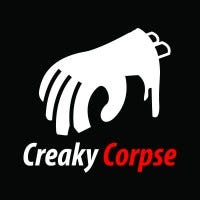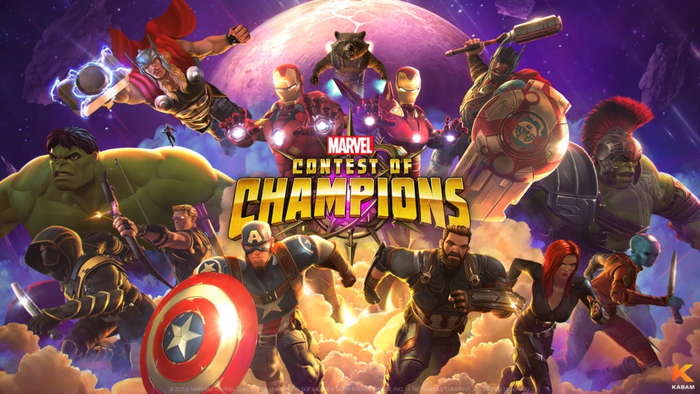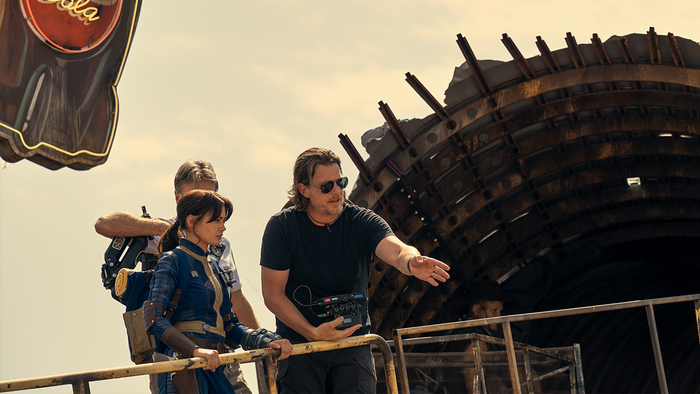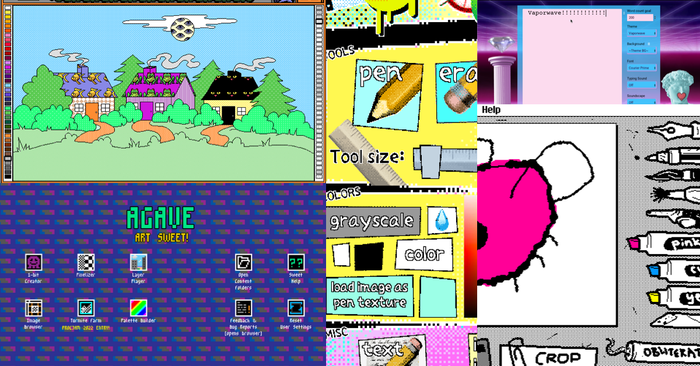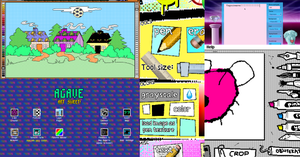
Featured Blog | This community-written post highlights the best of what the game industry has to offer. Read more like it on the Game Developer Blogs.
My company (Creaky Corpse Ltd) recently published March of the Living, an indie roguelike by Machine22. This was the first time I’d ever published a game by another indie developer, and I found the journey incredibly eye opening. This is what I've learned

On April 20th 2016 my company, Creaky Corpse Ltd published a game by Machine22 (Dave Toulouse) titled: March of the Living. It was essentially an indie rogue-like inspired by games like FTL, and set in the zombie apocalypse. This was the first time I’d ever published a game by another indie developer, and I found the journey incredibly eye opening. I’ve gone ahead and written up the story of how it all happened, in the hope that it may help other would-be publishers, or developers looking for one.
Early Success
I like to think I’ve been pretty successful as an indie game developer. Back in 2008 I released the zombie mmorpg Dead Frontier (http://www.deadfrontier.com). Despite receiving little in the way of press and with no budget to speak of, I managed to attract the attention of millions of gamers worldwide. Eight years later the game is going strong with over 200k people still logging in on a regular basis.
Time Poor
As awesome as this success has been for me, it’s made it difficult for me to feel like I’m still an indie developer. In those last 8 years I’ve released just one other game, and getting that out of the door was a monumental task. Running a popular mmorpg takes a huge amount of work, and even though I’ve now delegated many of the tasks to other people, it’s still a massive time sink. Add in the fact that I’ve got three kids, and a fourth on the way, finding the time to actually work on other projects is tough to say least.
Despite being time short, my company (Creaky Corpse Ltd) does have funds available. However, over the years I’ve found there are only so many ways to productively re-invest into a successful game idea. Paid advertising used to be great but competition from other, more aggressive F2P games has pushed the average CPA beyond a point where we can make a positive return in most channels.
Risk Aversion
I’ve been asked many times in the past why I don’t *just* scale up. This would mean hiring a fully fledged development team and really pushing the boat out on either improving Dead Frontier or creating something new. Whilst this probably sounds exciting to most people, to me it sounds like my worst nightmare. I’m a creative person who works best alone, and being a ‘manager’ was definitely not what I dreamed of doing when I was kid.
Then there is the risk factor. If you have dozens of employees, and your payroll cost is only just below your total revenue, it doesn’t take much of a hiccup for half (or more) of those people to lose their jobs. How would I sleep at night knowing that I’ve potentially wrecked the financial future of all those families? Call me a sissy, but looking after my own family is a big enough responsibility as it is.
Investing In Indies
So to cut a long story short I recently started thinking seriously about the idea of investing in other people’s games. I had heard about the success of Cliff Harris from Positech investing first in Redshirt and then in Big Pharma and felt that a similar strategy might be a good move for me. However the problem was that I had no idea where to even start looking for suitable developers. The publishing seed was firmly planted in my brain, but as always I simply hadn’t found the time to pursue it seriously yet.
Then in late 2015 I heard that a developer friend of mine, Dave Toulouse of Machine22 had recently been made redundant from his day job and was looking for a backer so that he could work on his latest project full time. My interest was immediately piqued. I knew Dave was a great developer, completely capable of making a solid, polished product but who had so far just been a little unlucky financially. But when I saw the gameplay video of his prototype I was honestly a little disappointed, it just didn’t jump out at me as an especially catchy idea. I had to decline his offer.
Just a few days later, Dave got back to me, saying he agreed the original idea wasn’t so great, and would I be interested in any of these other ideas. I was presented with a very brief outline of some projects he’d thought of and as I scrolled through one of them leapt out at me. The idea was a zombie survival strategy game with randomized text events, similar to FTL. I immediately knew that out of them all, this was the one with the most potential. However Dave had put this near the bottom of his list, and hadn’t really described it in much detail. I wasn’t sure he was passionate about the idea, and believe me, I know that if you aren’t totally in love an idea, there is no way you can make a decent game out of it.
However after chatting some more it sounded like I had gotten it all wrong. This was actually his favourite idea of the bunch, but because it was a zombie game he felt it was too cheesy and was even a little embarrassed by it. It may have been cliche to some investors, but to me it was gold-dust. I already had a decent following of zombie fans from Dead Frontier who I could potentially promote to, and because I knew the genre inside out I knew I’d be able to lend a hand with some of the writing. So of course, once I knew that Dave was just as excited by the idea as me, I was keen to get involved.
The Deal
The basic deal we setup was one where I would pay for all development costs, including 6 months worth of salary for Dave. Once the game went on sale, he would receive 25% of sales, until my costs had been repaid, at which point we’d go 50/50.
Some people asked me why Dave should still receive a percentage after he had already be paid a salary. Ignoring the fact that taking 100% of the revenue would just be a little too evil for my liking, it would also mean that Dave would have no reason to make the game a success. He knew that he had a chance to make it big, and therefore tried his best to make the greatest game he could. Without that incentive, I seriously doubt March of the Living would have been any good.
All in all, due to the shortness of the planned dev cycle, and the decision to go with a fairly basic set of artwork the cost to produce the game was actually quite low. This suited my risk adverse nature down to the ground and made me feel confident that even in the indiepocalypse we’d could still make a return.
Development
The development of MoTL from my perspective was absolutely amazing. I essentially did nothing other than give feedback on builds and help deal with some contractors (art, sound and event design). This was a godsend for me, as at the time I was busy fighting various Dead Frontier hacking groups and launching a new expansion to the game.
Dave planned out pretty much every feature from the start. He then executed his plan to the letter, rarely straying too far from the initial design and not getting caught up adding unnecessary features. I feel that this meticulous approach was of huge benefit to the project, as Dave not only finished the project in time, but we also came in UNDER BUDGET!
For those of you who haven’t worked as a game developer before, let me tell you that this is a huge deal. Most games take far longer, and cost far more than initially intended. This was one of my biggest worries with MoTL; that at some point Dave wouldn’t be able to finish the project with the time and money available and would need another injection of cash. I initially had nightmares where the costs spiralled out of control and the game took years to release. Luckily for me, it seems Dave is some kind of game development cyborg sent from the future.
Greenlight
Only once the game was ready for Steam greenlight did I start putting in some significant time. I must have sent out over 600 individual emails to just about every press/youtuber I could find, asking if they could offer us coverage to help us get votes.
Unfortunately the vast majority of press weren’t interested, and understandably so. I’m sure they are so swamped with emails of this kind that they can’t possibly know in advance which games are actually worth paying attention to.
Luckily we did get a response from some smaller youtube channels, who decided to do let’s plays of our pre-release beta. I believe these small channels really helped us get the extra visibility to push us through Greenlight. I also asked my existing Dead Frontier audience to take a look and consider voting for the game. I’m unsure exactly how many votes this gave us, but it was surely significant. These two combined were enough for us to pass Greenlight in just two weeks.
Pre-Release
One week prior to release we begun sending out Steam keys to the press and youtubers. We saw a far greater response than we did when we were in Greenlight. Having a Steam key rather than a zip file makes it so much easier for them to take a look.
In addition, several people commented that by using our elevator pitch (FTL + zombies) in the email subject line, we had managed to draw attention to ourselves very successfully. This was entirely Dave’s idea and it worked really nicely.
I can’t say that we generated huge amount of media attention, but this time around we managed to do a lot better than I have ever managed before (ie. nobody wanted to talk about Dead Frontier even though it was a huge hit).
Release
March of the Living launched on Steam on April 20th and immediately shot into the Popular New Releases category and the Top Sellers charts. From there we appeared in the main capsule. By the second day we reached #8 Top Seller and #3 Indie Top Seller.
Unfortunately this moment in the limelight didn’t last long, and I as I speak roughly 6 days later, we have dropped off of most of the charts. To me this means MoTL has been a big success, but definitely not a full blown hit.
However I’m pleased to report that the game still managed to repay my entire investment in just 3 days, making every sale after this pure profit. Judging by my own (fairly pessimistic) estimates, I predict the game will generate Creaky Corpse an ROI in excess of 1200% over it’s lifetime.
It’s important to note however, that this could easily have been a far different story. We could have gone over-board with graphics and polish. We could have spent 2 years on it instead of 6 months. Rather than using contractors we could have brought in full-time staff, rented an office etc. All of this may have made our game slightly better, but it wouldn’t have changed the core premise, which is (in my opinion) what attracts the average gamer to an indie title. In this scenario we almost certainly would have lost a lagre amount of money.
What I feel we did right
We closely examined lots of ideas and came up with the one that had most going for it. The idea we used combined some of the most popular tags/genre such as roguelike, survival, horror and zombies. We also made sure that it was a fairly unique combination, which I believe is essential to stand out from the crowd of competitors.
We made sure we had a solid elevator pitch, one that would instantly inspire the imagination when you heard it; essentially “FTL + zombies”. This was very useful in attracting the attention of press and youtubers (several told us that this is the main reason they took a look at it).
I leveraged my existing Dead Frontier audience by offering a free item for everyone who purchased March of the Living on Steam. This didn’t have a huge impact in overall sales (about 5%) but it did mean we got a lot of sales in the first hour. This was probably responsible for us shooting up the charts so quickly after release. It’s hard to know what would have happened without this boost, but it certainly didn’t hurt!
Dave had a detailed development plan for the game and stuck to it religiously. We didn’t allow a lot of superfluous features to creep into the project, which could have caused us to run out of time and go over budget.
We kept costs low by using pixel art and by making sure our game didn’t need tons of it to work. My opinion is that unless you’ve got millions to spend, you aren’t going to compete with the big boys so there is little point trying.
What I feel we could have done better
We should have done more user testing pre-launch. After release we did receive some negative reviews from people who felt the game was either too hard or too easy. Other people felt that the pace of the game a bit slow, and combat was too fiddly to control. All of these things could have been fixed pre-release quite easily/quickly, and we could have had a higher review score for it. We’re almost done sorting these issues now, but would have been nice to be a little more polished at launch.
Whilst citing FTL as an inspiration was a good idea, we could probably have made it more clear that we were not trying to be a direct copy of it. A few hardcore FTL fans complained that the game was not FTL-like enough for them. Our game is a lot more focused around story, realism and resource management, whereas FTL is more about the combat.
Not releasing this back in 2013! I feel like had we launched back then we would have sold 10x as much. I am half-joking of course, but I do feel that the market has changed a hell of a lot in the last few years.
Tips for publishers
If you’re looking at publishing indie games, this is what I would advise. You will note a common theme here: motivation. As an indie developer I know how important motivation is to the success of a game; if you don’t enjoy making it, the end result will suck.
Make sure you find the right person/people. Ideally you want somebody who has a track record of well-made, finished games, but simply hasn’t been lucky with their ideas so far.
I believe the idea for the game should come from the developer themselves initially. If you try to dictate a design to them, they won’t be enthusiastic, which will pretty much guarantee it’s failure. Just about every indie has 10+ game ideas they’d love to work on at any one time, find out what they all are and pick the best.
Allow the developer a lot of creative freedom. By all means try to mold their ideas in a slightly more saleable direction, but don’t take it too far. Don’t kill their passion for the project.
Be generous with your deal and make sure they have just as much reason to make the game a hit as you do. If either party feels like they’re getting the raw end of the deal, you can guarantee they won’t do their best work.
Keep the costs under control! This is really important in the current oversaturated game market. Even a really good game can fail to make the huge sums necessary to support a team over several years. The amount of money I put in was low enough that even if the game was a flop, it still would have had a good chance to make back the investment over several years with smart discounting and bundling. Plus I knew that it wouldn’t ruin me financially if I never saw a penny back.
If you have an existing audience of your own, try to think of ways you can use it. Ideally you want there to be some cross-over in the game ideas, so that you can promote the new game to them without a huge backlash
Conclusion
I’m overjoyed that this project has gone so well. It’s given me back some of the excitement of releasing one of my own titles, but without all the hard-work. I would definitely be interested in doing it again, either with Dave or with another developer providing the fit was right.
March of the Living:
http://www.marchofthelivinggame.com
If you want to know more about how the game was made, please see Dave Toulouse’s blog over at:
http://www.over00.com/
Thanks for reading,
Neil Yates
@CreakyCorpse
http://www.deadfrontier.com
http://www.creakycorpse.com
Read more about:
Featured BlogsAbout the Author(s)
You May Also Like

